Project LiveWire: Harley-Davidson's First Electric Motorcycle
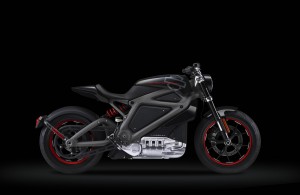
The motorcycle world woke up to a
shock this morning as Harley-Davidson revealed its first ever
electric motorcycle: Project LiveWire.
On the heels of a banner year for pushing its boundaries with the
launch of the Project Rushmore 2014 water-cooled Touring models and
the first completely new model reveals in 13 years with the Street
750 and 500, no one expected to see Harley come out with an
all-electric motorcycle-not so soon at least.
Currently a prototype and therefore not available as a production
bike, Project LiveWire will continue down Harley's path of
recruiting the public's suggestions and feedback for the
development of its products and motorcycles. With the Livewire H-D
will be gauging the public's interest and taking careful notes on
recommendations to determine the viability of incorporating such a
model into their lineup.
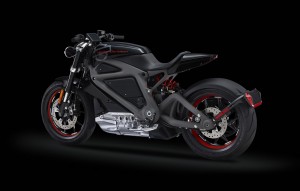 While details and specs about the
LiveWire are still scarce (Harley is being excessively tight lipped
about revealing too much about a model that is not a production
bike) what we have seen and learned is, gone is the iconic
45-degree V-twin powerplant Harley is most known for. In its place
is a longitudinally-mounted, three-phase, AC motor rated at 74
horsepower and 52 pound-feet of peak torque. Harley says the bike
is capable of zipping off from 0-60 in less than four seconds. The
LiveWire is also electronically governed to a top speed of 92 mph.
Power is derived from a lithium-ion battery with a range of
about 53 miles and charges in about 3-1/2 hours at 220 volts.
While details and specs about the
LiveWire are still scarce (Harley is being excessively tight lipped
about revealing too much about a model that is not a production
bike) what we have seen and learned is, gone is the iconic
45-degree V-twin powerplant Harley is most known for. In its place
is a longitudinally-mounted, three-phase, AC motor rated at 74
horsepower and 52 pound-feet of peak torque. Harley says the bike
is capable of zipping off from 0-60 in less than four seconds. The
LiveWire is also electronically governed to a top speed of 92 mph.
Power is derived from a lithium-ion battery with a range of
about 53 miles and charges in about 3-1/2 hours at 220 volts.
Many will joke that you'll have to mount an iPod to the bike to get
the distinct "potato-potato-potato" Harley sound. But sound was a
key factor amongst H-D engineers and designers in the development
of the LiveWire, "The sound is a distinct part of the thrill," says
Mark-Hans Richer, Senior Vice President and Chief Marketing
Officer, Harley-Davidson Motor Company. "Think fighter jet on an
aircraft carrier. Project LiveWire's unique sound was designed to
differentiate it from internal combustion and other electric
motorcycles on the market." When you watch the videos circulating
the internet you can definitely hear that high-pitched whine, it's
like a jet engine or turbo spooling up.
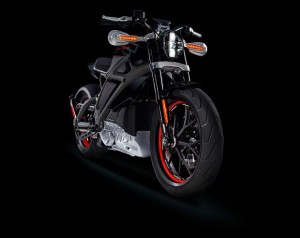 The chassis is based on a one-piece,
cast aluminum frame and swingarm with a texture coated finish.
Weight is a big factor in EV performance, (both power-wise and
mileage-wise) and Harley took that into consideration with a frame
that weighs only 14 pounds. In addition, with no emissions to expel
there's no exhaust system,
which also helps reduce the overall weight factor and make for a
much more streamlined appearance.
The chassis is based on a one-piece,
cast aluminum frame and swingarm with a texture coated finish.
Weight is a big factor in EV performance, (both power-wise and
mileage-wise) and Harley took that into consideration with a frame
that weighs only 14 pounds. In addition, with no emissions to expel
there's no exhaust system,
which also helps reduce the overall weight factor and make for a
much more streamlined appearance.
Additional weight was saved by employing aluminum wheels with
hollow spokes, which according to Harley are the lightest the
company has ever produced. Tires are Harley-Davidson-branded
Michelin motorcycle
tires with a 120/70-18 running up front and 180/55-17 bringing
up the rear.
Front suspension is handled by an inverted, Showa Big Piston Fork
with a single, coil-over rear shock, both of which are
tuneable.
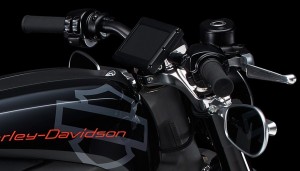 You can't have an electronic
motorcycle without some cool gadgetry, and the LiveWire delivers
with what looks to be about a 6 to 8 inch TFT LED display that
provides a host of diagnostic and performance information. There is
also the ability to choose from a Range or Power mode depending on
the type of riding you'll be doing.
You can't have an electronic
motorcycle without some cool gadgetry, and the LiveWire delivers
with what looks to be about a 6 to 8 inch TFT LED display that
provides a host of diagnostic and performance information. There is
also the ability to choose from a Range or Power mode depending on
the type of riding you'll be doing.
As stated earlier, the Motor Company is using the LiveWire as a
meter to gauge interest and input from both its hardcore fans and
the general public worldwide. To help facilitate that endeavor,
Harley is kicking off a Route 66 tour next week that will run
through the end of the year stopping at 30 dealerships along the
way. During this time select consumers will be able to ride and
provide feedback on the bike, and even those who don't ride will be
able to get a feel for the power of Project LiveWire though a
simulated riding experience called Jumpstart. In 2015, the Project
LiveWire Experience will continue in the U.S. and expand into
Canada and Europe.
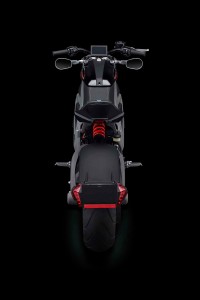 While some may look at the sporty and
aggressive naked-bike lines of the LiveWire and think, "why would
Harley, the iconic cruiser motorcycle manufacturer, create a bike
that is so drastically different stylistically than what has worked
so well for them in the past?" And that is a great question, one
that could be answered many ways. With the electric motorcycles
that have come out in recent years from manufacturers like Brammo
and Zero, Harley had the opportunity to create a cruiser or Touring
style electric motorcycle that would have drastically stood apart
from the others and still would have shocked and wowed people.
However, if they were to do that there would be the detractors and
Harley haters with their typical responses that would go something
like, "looks like every other Harley, just with an electric
motor."
While some may look at the sporty and
aggressive naked-bike lines of the LiveWire and think, "why would
Harley, the iconic cruiser motorcycle manufacturer, create a bike
that is so drastically different stylistically than what has worked
so well for them in the past?" And that is a great question, one
that could be answered many ways. With the electric motorcycles
that have come out in recent years from manufacturers like Brammo
and Zero, Harley had the opportunity to create a cruiser or Touring
style electric motorcycle that would have drastically stood apart
from the others and still would have shocked and wowed people.
However, if they were to do that there would be the detractors and
Harley haters with their typical responses that would go something
like, "looks like every other Harley, just with an electric
motor."
What it comes down to is, if Harley is going to continue to draw
new customers and a younger demographic to supplement is aging core
demographic, they have to get out of their comfort zone and take
chances, hence the launch of the ultra-light cruisers, the Street
750 and 500. And that is exactly where the LiveWire fits into
place. The purpose of Project LiveWire wasn't about re-hashing the
tried and true cruiser, it's about innovation and reinvention from
an American company steeped in 111 years of iconic history.
"America at its best has always been about reinvention," said Matt
Levatich, H-D President and COO. "Like America, Harley-Davidson has
reinvented itself many times in our history, with customers leading
us every step of the way. Project LiveWire is another exciting,
customer-led moment in our history."
Fans can learn more about Project LiveWire, as well as specific
dates and locations for Project LiveWire Experience stops at
projectlivewire.com. Harley-Davidson also invites anyone who is
interested in the possibilities of the future to follow and engage
with the company on its social media channels, including Facebook,
Twitter and Instagram.
